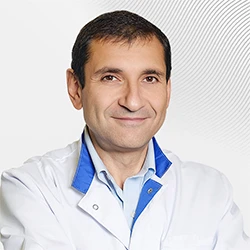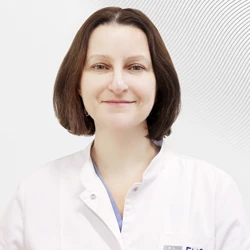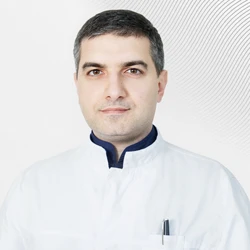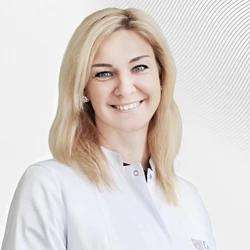Ovarian cysts are a widespread disease in women of childbearing age. At the same time, 30% of cases of cyst formation are diagnosed in patients with a regular menstrual cycle and 50% with a disrupted one. During menopause, the disease can occur in 6% of women.
Types of ovarian cysts
By their nature, cysts are divided into functional and organic. The first ones are temporary and are formed due to a minor malfunction of the ovary. A functional cyst is usually treated with oral hormonal drugs and self-destructs after one to two months. But there are also cysts that do not disappear for more than two months and require surgical intervention. They are commonly called organic.
Follicular. The cavity of the follicular cyst has thin walls with a smooth surface, with a diameter of two to seven centimeters. Sometimes several follicular cysts can form along the incision, but they are always single-chambered, without partitions.
Corpus luteum cyst. A cyst of a functional nature. The cyst of the corpus luteum has thickened walls and can be from two to seven centimeters in diameter. The inner surface of the cyst is often yellow, the contents are light, and with hemorrhages they are bloody.
Hemorrhagic.It is a consequence of hemorrhage inside the formed follicular cyst or corpus luteum cyst.
Endometrioid. It is formed when the tissues of the mucous membrane of the inner layer of the uterine wall grow in the ovaries. An endometrioid cyst is often filled with dark contents, blood, and its diameter ranges from two to several tens of centimeters.
Dermoid. It consists of parts of the embryonic germ sheets enclosed in a mucus-like mass, derivatives of connective tissue (fat, cartilage, skin). A dermoid cyst usually does not reach large sizes and grows slowly.
Mucinous. Benign epithelial tumor. The cavity of this cyst has an uneven surface and is filled with mucin, a slimy liquid that is the secret of the epithelium. A mucinous cyst can reach quite large sizes and have several chambers.
Serous. Benign epithelial tumor. The capsule surface is lined with serous epithelium. It contains a light straw-colored transparent liquid inside.
Epithelial tumors. They develop from the epithelial components of the ovary. They can be benign, borderline, or malignant.
Germinogenic tumors. They account for less than 5% of all neoplasms in the ovaries. At the same time, they are characterized by the most violent current. They are often quite large (more than fifteen centimeters).
Reasons
There are quite a few reasons for the development of an ovarian cyst.
-
hormonal and endocrine disorders;
-
early menstruation;
-
artificial termination of pregnancy, including abortions;
-
thyroid disorders;
-
inflammatory diseases and sexual infections;
Complications
An ovarian cyst may have the following complications:
-
Some types of cysts can become malignant if they persist for a long time. It should be remembered that only a histological examination can be an accurate method of diagnosing the nature of a cyst.
-
Twisting of the cyst stem, which may be accompanied by severe pain, cyst rupture, which may result in the development of peritonitisInfertility.Specialists of the European Medical Center warn that it is very important to visit a gynecologist regularly (once a year) for timely diagnosis of pelvic pathology. In the case of an already identified ovarian cyst, the frequency of visits to the gynecologist is determined by the doctor individually.DiagnosticsThe cyst is diagnosed by the following methods:
-
Gynecological examination. It allows you to determine the soreness in the lower abdomen and an increase in appendages.
-
Ultrasound. The most informative method, as it allows not only to determine the presence of a cyst, but also to monitor its development.
-
Ovarian laparoscopy. Not only is there an almost 100% method of cyst diagnosis, but also a method of its treatment.
-
Pregnancy test. It is necessary to rule out ectopic pregnancy.
-
Computed tomography or magnetic resonance imaging. These methods are used to determine the quality of the cyst, its location, size, structure, contours, and other parameters necessary for surgery.
TreatmentThe choice of cyst treatment depends on the nature of the cyst, its type, and the presence of complications. The most common functional cysts are usually treated with oral hormonal medications. Treatment of these cysts can take from two to three months, depending on the size of the formation. At the same time, the dynamics of treatment is monitored using ultrasound. If drug treatment is ineffective, surgical intervention is recommended.The surgical method is more often used as the main one for the treatment of complex organic cysts. Modern technologies assume laparoscopic intervention in such cases, which allows minimally damaging healthy tissues, minimizing complications from surgery and minimizing the duration of hospitalization to 1-2 days. In any case, during the operation, doctors will try to preserve the patient's ovary and reproductive capabilities as much as possible.
Was this information helpful?
Questions and answers
Sudden rises of blood pressure
How to stabilize sudden rises of blood pressure, accompanied by nausea and vomiting in a patient with chronic hypertension (it is not always clear what comes first - nausea and vomiting and, as a consequence, the blood pressure increase, or Vice versa).
An adjustment of appropriate permanent antihypertensive therapy is required for blood pressure to be stabilized. It is best to schedule a consultation with the cardiologist and undergo heart ultrasound, 24-hour blood pressure monitoring and ECG. You can make an appointment by phone +7 (495) 933-66-55. Specialists of
the Cardiology Department will be happy to help you.
...more
Extrasystoles
Extrasystoles appeared on my husband’s ECG following smoking cessation. He has a serious intension to undergo a thorough examination. What kind on up-to-date methods are used in your clinic?
EMS offers the most up-to-date methods of examination for your husband to clarify the nature of arrhythmias. ECHO-cardiography, 24 hour Holter monitoring ECG, loading tests, and, if needed, 24-hour blood pressure monitoring as well as all laboratory tests are available at EMC’s cardiology department. There is an
option to undergo a comprehensive examination under the program "Health Status after 40", which includes specialists' consultations, diagnostic laboratory and instrumental tests. We will be happy to help you. You can make an appointment by phone +7 (495) 933-66-55.
...more 
Dyagileva Mariya
08 September 2016
How soon another attempt is possible?
Twin pregnancy resulted from IVF, but cervical dilatation occurred and water broke at 20 weeks, so the pregnancy was not maintained. How soon another attempt is possible?
At least a year interval between childbirth and repeated IVF program is required. It is advisable to be prepared and to make every effort to get a singleton pregnancy.
Рolyp of the cervical canal
Hysteroscopy revealed a polyp of the cervical canal, it was removed, but there are plenty of micropolips. May I do IVF or they should be treated?
Usually, all polyps are removed at therapeutic and diagnostic hysteroscopy. It makes no sense to leave them in the uterus cavity. I think that if manipulation such as "Hysteroscopy with separate diagnostic curettage" was done, you have no polyps now and may safely prepare for IVF.
Рancreatic cancer
My wife of 64 years was diagnosed with pancreatic cancer in the autumn of 2014. Stage 4 was concluded. Surgery is impossible. There is a massive thrombosis. Three biopsies were carried out. A benign tumor was revealed. She lost a lot of weight. An episode of severe pain took place about one month ago. Currently, a
significant problem is the ascites, swollen legs; food is poorly digested, general discomfort. What can you recommend? Is it necessary to remove the fluid and what might be the consequences?
...more The picture you described is consisted with the concept of "metastatic ascites". Laparocentesis is appropriate as a therapeutic and diagnostic approach. Given the negative cytology, it is likely that the patient has a neoplastic disease of the colon, ovaries or stomach. Our experts will hold a consultation on the
same day and perform the procedure to verify the diagnosis and consider the possibilities of palliative treatment.
...more 
Pavel Koposov
07 September 2016





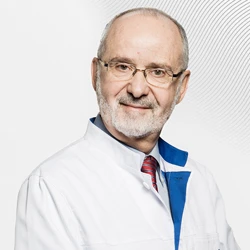

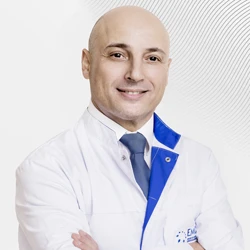

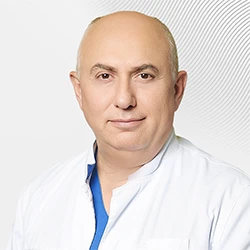







.webp)

.webp)
